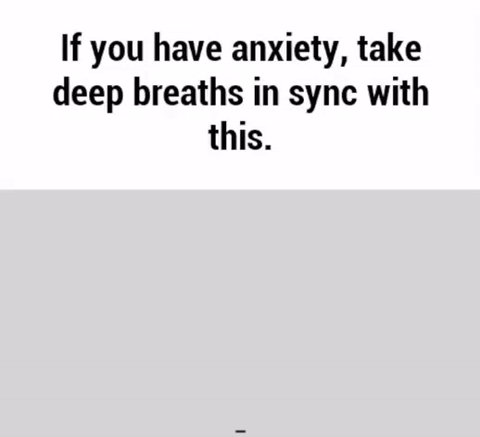5 Ways to Deal With Anxiety You Can Use In Any Situation
Everybody's familiar with it. Anxiety is an integral part of the human experience, whether it's triggered by something seemingly mundane or a traumatic, life-altering circumstance.
A threat — perceived or real — triggers a "fight or flight" response in us and can cause an increase in heart rate, shortening of breath, dizziness, chest pain along with a number of other possible symptoms.
Some experience these bouts more frequently or intensely than others — but experiencing them regularly can actually inhibit you from living a normal life. "Pathological anxiety interferes with the ability to cope successfully with life challenges," a study published in Dialogues in Clinical Neuroscience explained.
Here are five ways to help stop anxiety in its tracks when it next hits you.
1. Breathing
Slowing, controlling and deepening your breath can calm you down enormously. "By shifting your breathing rate and pattern, you can stimulate the body's parasympathetic response," anxieties.com says. "This is the body's equally powerful and opposite system to the Emergency Response and is often called the relaxation response."
This GIF can help you focus on your breathing by syncing your inhalations and exhalations with the expansion and collapse of the image respectively.

2. Visualization
Stopping, closing your eyes and imagining a peaceful place can also help mitigate anxiety. The Mayo Clinic explains that trying to employ all your senses will make this technique most effective.
"During visualization, try to use as many senses as you can, including smell, sight, sound and touch," the clinic states. "If you imagine relaxing at the ocean, for instance, think about the smell of salt water, the sound of crashing waves and the warmth of the sun on your body."

3. Cognitive Behavioral Therapy
CBT involves literally changing the way you think. Every time an anxious thought arises, you actively stop in your tracks, "neutralizing unhelpful thoughts underlying anxiety," the National Institute for Mental Health explains.
The idea is that if you change your thought process consistently, you will reinforce positive neural pathways in the brain and therefore be more likely to think those positive thoughts as opposed the anxiety-producing ones.

4. Eating properly
The Anxiety and Depression Association of America advises making sure you eat regular and healthy meals in order minimize anxiety — or at least in order to better manage it when it arises. The ADAA notes the importance of not skipping breakfast, lunch or dinner. It also suggests keeping some healthy snacks on hand (lest you be the type prone to getting hangry).

5. Progressive Muscle Relaxation
Progressive Muscle Relaxation has been shown to help tackle a number of challenges, from chronic pain to managing stress and anxiety. It involves targeting different muscle groups, from the bottom of your body to the top, first tensing them all up and then releasing and relaxing them. Working your way from your feet all the way up to your jaw, tense the muscles for a few seconds at a time before relaxing.

Now just imagine doing all five at the same time: You never knew you could feel so chill.